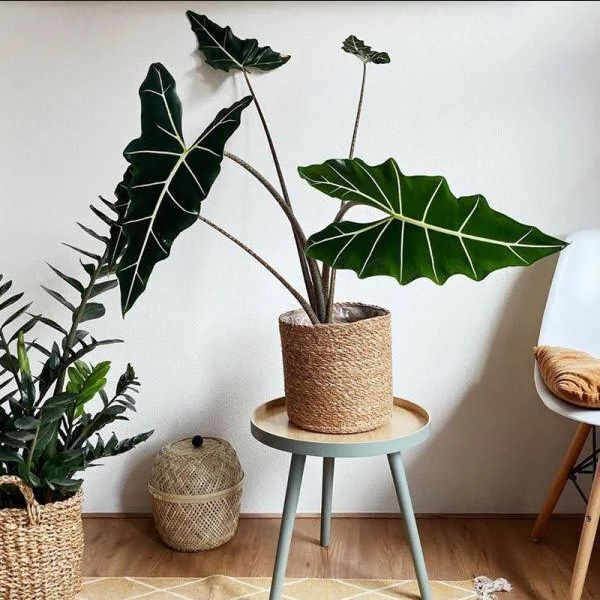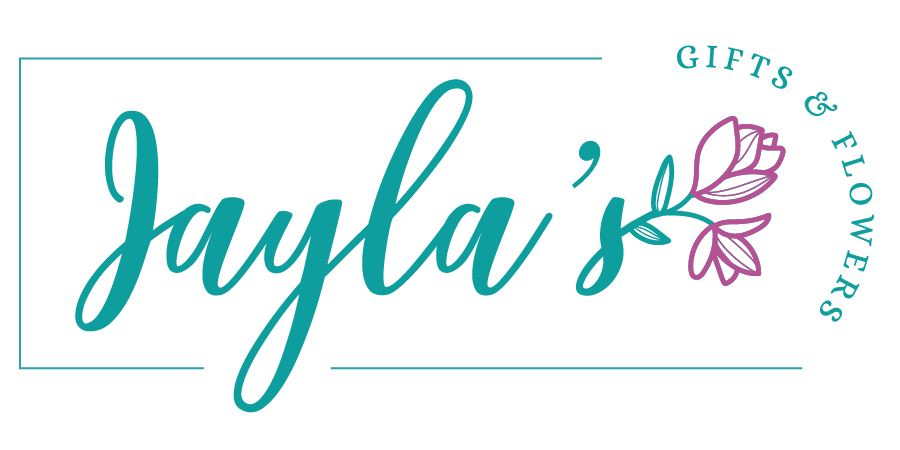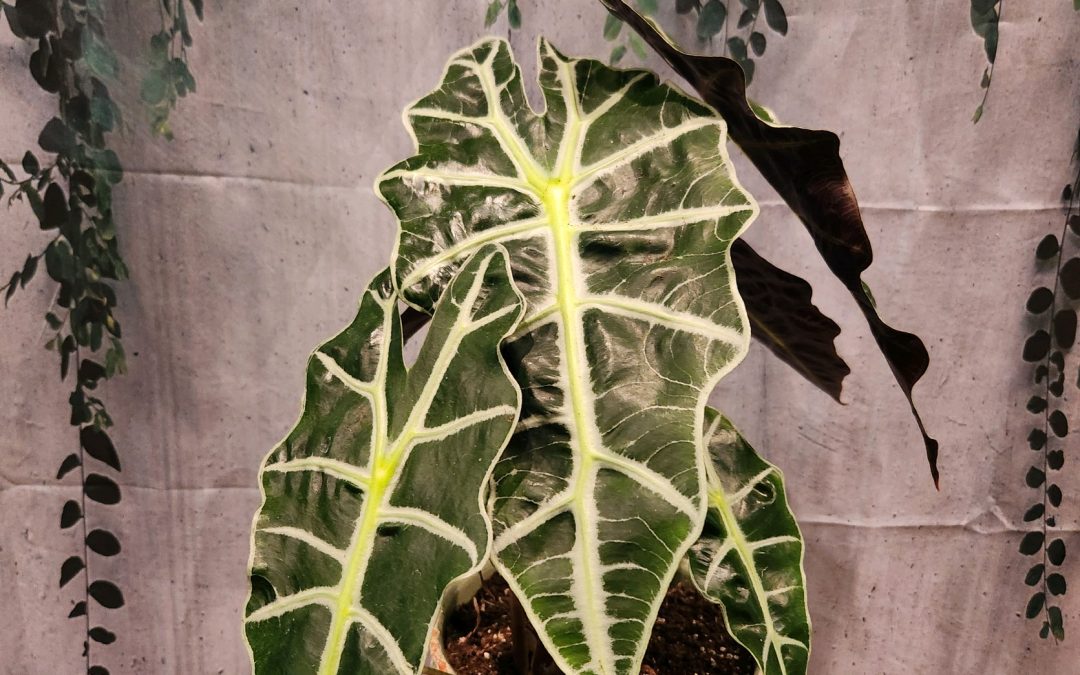Names of the African Mask Alocasia Plant
The African Mask Alocasia plant, is also known as the “Polly” Alocasia, Alocasia Amazonica, Facemask Plant, and Amazonica Elephant Ear.
It’s not a difficult plant to care for, but, it can be tricky to grow indoors as it must live in the right environment.
Alocasia African Mask Flowers
Polly has a green spathe-like flower in nature.
https://garden.org/plants/photo/265681/
However, as an indoor plant, we have yet to witness it. It is the foliage which makes this plant so desirable and beautiful.
The three main things to focus on and keep Polly looking good are exposure, watering, and meeting an above-humidity requirement.
Caring for Polly
Like our owners, Polly likes a warm environment.
Temperature:
- African Mask plants prefer temperatures between 65-80°F (18-27°C).
- Protect the plant from cold drafts, as temperatures below 60°F (15°C) can cause leaf drop.
- It will do best surrounded by other plants. In other words, if this is the only plant you own, get her someone leafy friends.
- If she was a gift, bring her into Jayla’s for a trade of something more suitable to your perferences.
Size
- The facemask plant will grow to be about 24″ tall by 24″ wide. During dormant periods, its leaves will get a bit smaller and be about 20″ tall x 18″ wide.
- Its size lends itself to be more of a floor plant.
Keep away from young children and pets… bring in for an exchange to something pet-friendly.
Humidity:
- African Mask plants prefer high humidity levels between 60-80%.
- Increase humidity by using a humidifier, placing a tray of water near the plant, or grouping it with other plants. The latter is the easiest, most natural and preferred method.
Watering:
- Water your African Mask Alocasia plant thoroughly, allowing the top 1-2 inches of soil to dry out between watering sessions. At our Nappanee location, we give Polly about 1/4 cup of water each week.
- Remember to use room temperature water and avoid overwatering, as this can lead to root rot.
- Increase watering during the growing season in spring and summer, and reduce in the dormant season in fall and winter.
Toxicity:
- African Mask plants are toxic if ingested, so keep them away from children and pets.
- If you receive the African Mask plant as a gift and are not sure how to care for it properly, or you have young children or pets, please visit us for an in-person consultation, or an exchange to something safer, respectively.


Light for Alocasia Amazonica:
- We like to place the African Mask plant in Southeast bright, indirect light, avoiding direct sunlight, typically close to the ground.
- Provide some morning or evening sun, but avoid exposing the plant to strong midday sunlight, as this can scorch the leaves. If you burn the leaves, have no fear. Simply adjust the location, and prune the burnt leaf to encourage new growth.
Soil and Repotting Polly:
- If your African Mask Alocasia plant was purchase from Jayla’s, the good news is that we have already transferred polly into a ceramic or planter suitable for successful growth.
- When re-potting, use a well-draining soil mix consisting of equal parts of peat moss, perlite, and sand, or bring Polly into our shop, and we will repot her for free if you bring your own container. We also have ceramic planters for purchase.
- Repot the Polly plant every 1-2 years to prevent the roots from becoming pot-bound.
Shop for your Alocasia Amazonica here:
As always, at Jayla’s we deliver for you.


